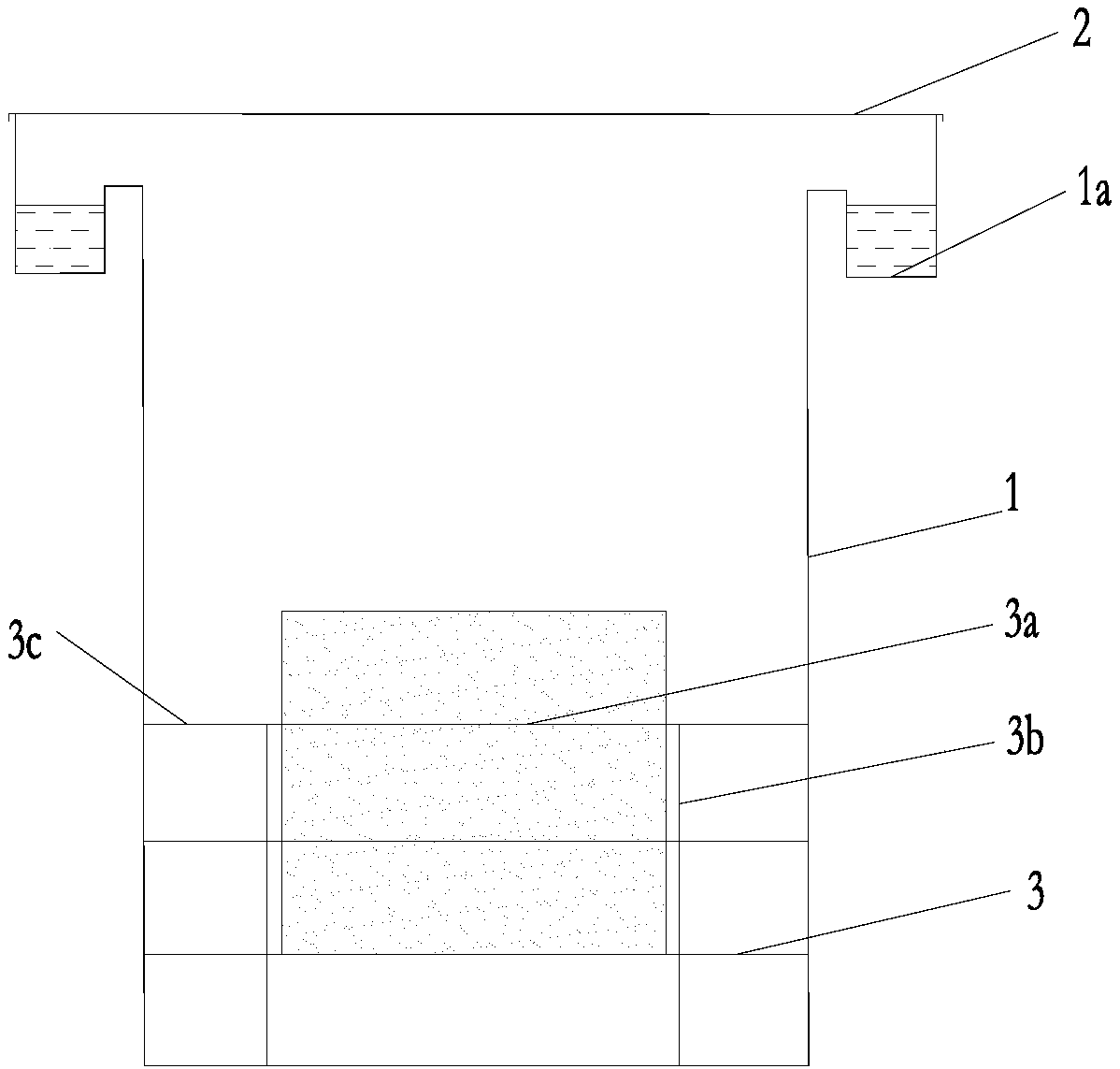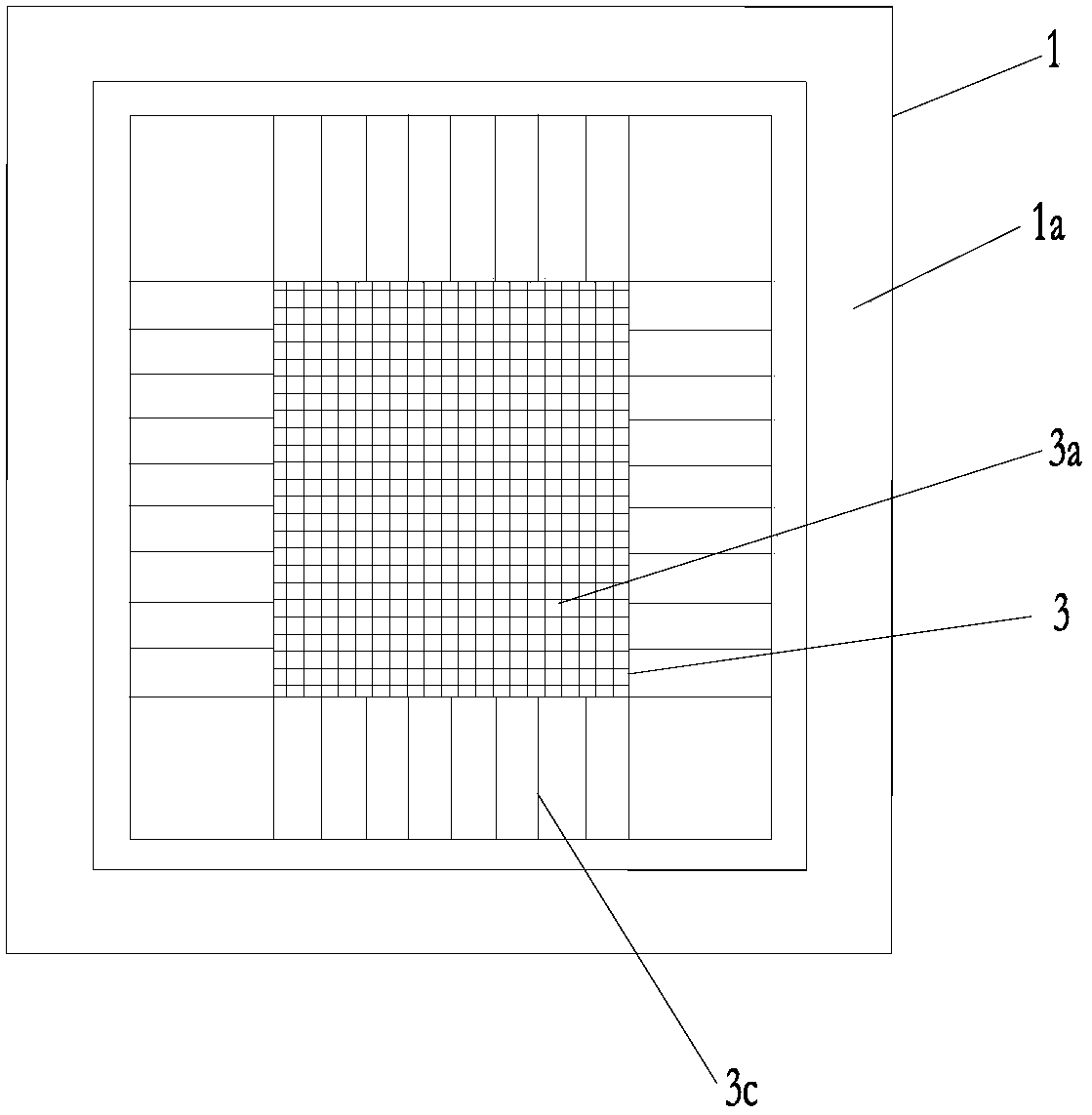Mass rearing method of predatory mite
A large amount of predatory mite technology, applied in animal husbandry, etc., can solve the problems that are not conducive to predatory mite prey, limit the activity of predatory mite, and slow population growth, so as to help find prey, prevent escape, and meet feed requirements Effect
- Summary
- Abstract
- Description
- Claims
- Application Information
AI Technical Summary
Problems solved by technology
Method used
Image
Examples
Embodiment 1
[0020] Embodiment 1 predatory mite rearing device
[0021] Such as Figure 1-2 A kind of predatory mite raising device shown is made up of box body 1, box cover 2 and three (usually 2-6 raising racks) stacked raising racks 3, and the bottom of raising rack 3 is equipped with four 4cm high The supporting legs 3b make the space distance of 4cm between the two layers of feeding racks, and wheat bran can be spread, which can ensure enough wheat bran for raising predatory mites and can ensure the air circulation in the casing. The top edge of the box body 1 is provided with a water tank 1a surrounding the box body 1. The outer wall of the water tank 1a is higher than the inner wall. The depth of the inner wall of the water tank is 2cm, and the depth of the outer wall is 3cm. After injecting water, it can prevent the escape of predatory mites and does not affect the cover of the breeding box. It is convenient to add a cover to the breeding box to keep the humidity in the box.
[0...
Embodiment 2
[0024] Embodiment 2 raises predatory mite in large quantities
[0025] Utilize the predatory mite raising device among the embodiment 1 to carry out predatory mite--Neoseius pasteurii a large amount of raising, concrete operation steps are:
[0026] Autoclave the wheat bran at 121°C for 15-20 minutes, take it out and cool it. Artificially rear acaroid mites (or fruit mites) with sterilized wheat bran, and when the density of acaroid mites (or fruit mites) in wheat bran is ≥ 100 heads / g, the wheat bran containing acaroid mites (or fruit mites) Be spread on the feeding frame 3 of described rearing device as the feeding material of predatory mite, spread about 0.8 kilogram of feeding material on each feeding frame 3, insert predatory mite in feeding material then, the inoculation amount of predatory mite in feeding material is 100 heads / kg (80-130 heads / kg is acceptable). Inject water into the water tank 1a, cover the box cover 2 to raise, the raising conditions are temperature...
Embodiment 3
[0027] Embodiment 3 traditional raising method and raising method contrast of the present invention
[0028] Traditional feeding method: the feeding device is to place a breeding box in a water-containing container, so that the bottom of the feeding box is submerged in water to prevent the escape of predatory mites and maintain the humidity in the box; add wheat bran to the breeding box to raise acaroid mites, and then inoculate predatory mites , to prey on the acaroid mites in the wheat bran to reproduce the predatory mites; when the population of the acaroid mites in the wheat bran declines due to being preyed for a long time, add new wheat bran containing acaroids to maintain the survival of the predatory mites. The traditional breeding method has the following disadvantages: (1) The anti-escape water container is located at the bottom of the rearing box. Although it can prevent the predatory mites from escaping to the outside world, the predatory mites are limited to the br...
PUM
 Login to View More
Login to View More Abstract
Description
Claims
Application Information
 Login to View More
Login to View More - R&D
- Intellectual Property
- Life Sciences
- Materials
- Tech Scout
- Unparalleled Data Quality
- Higher Quality Content
- 60% Fewer Hallucinations
Browse by: Latest US Patents, China's latest patents, Technical Efficacy Thesaurus, Application Domain, Technology Topic, Popular Technical Reports.
© 2025 PatSnap. All rights reserved.Legal|Privacy policy|Modern Slavery Act Transparency Statement|Sitemap|About US| Contact US: help@patsnap.com



